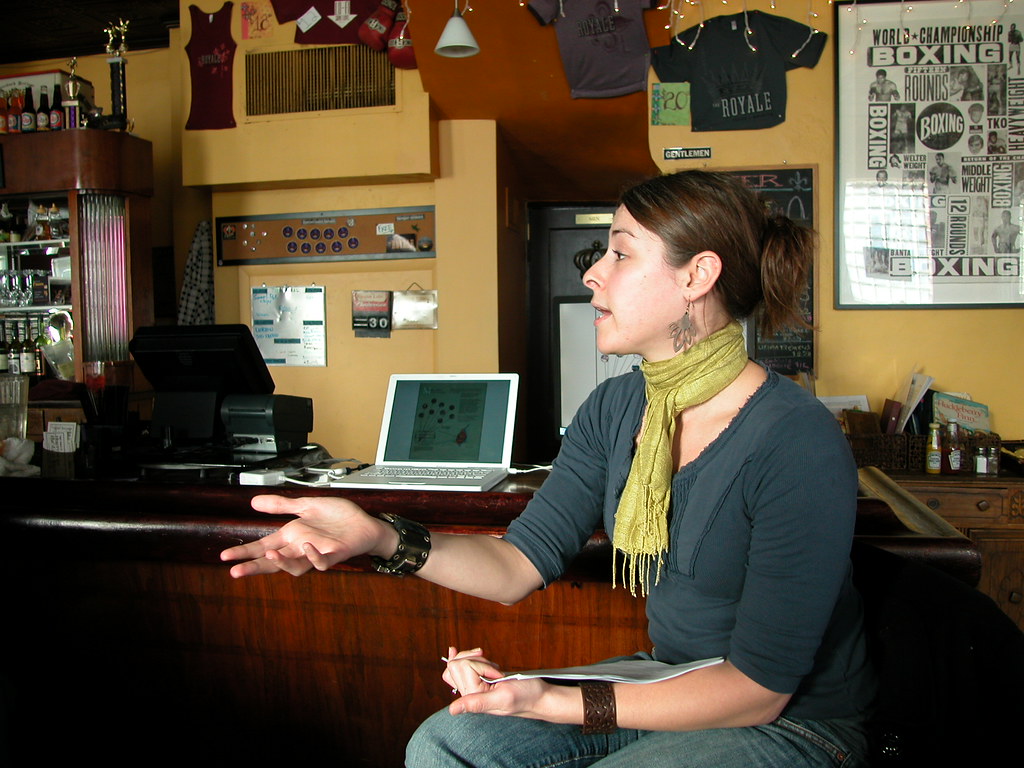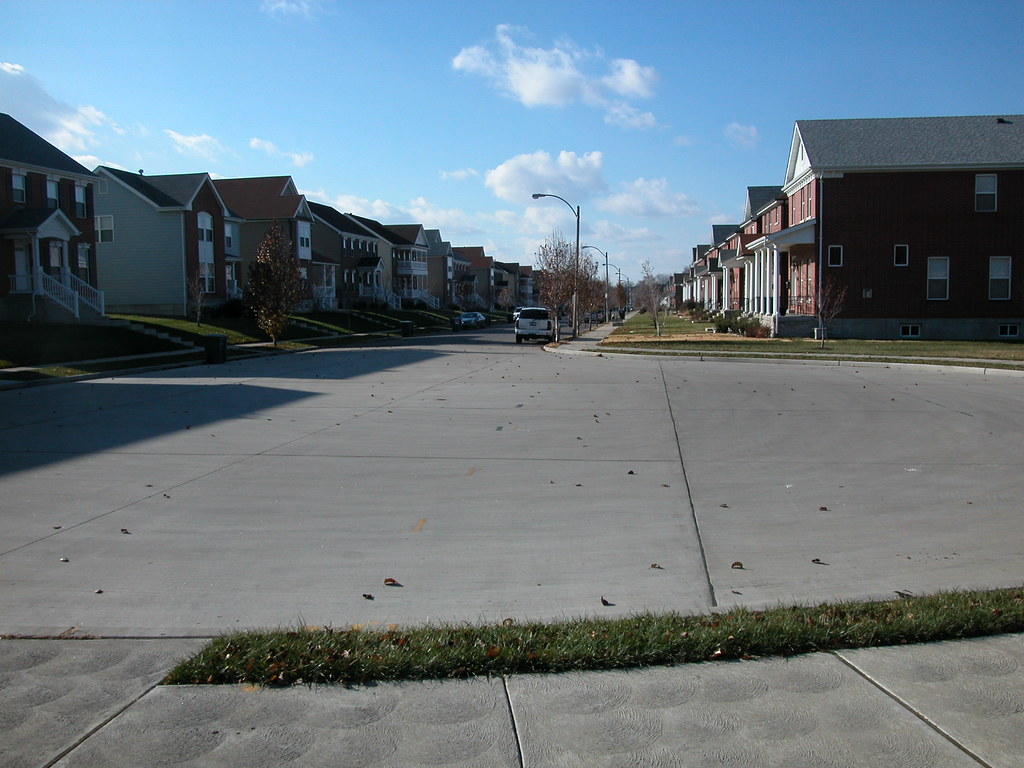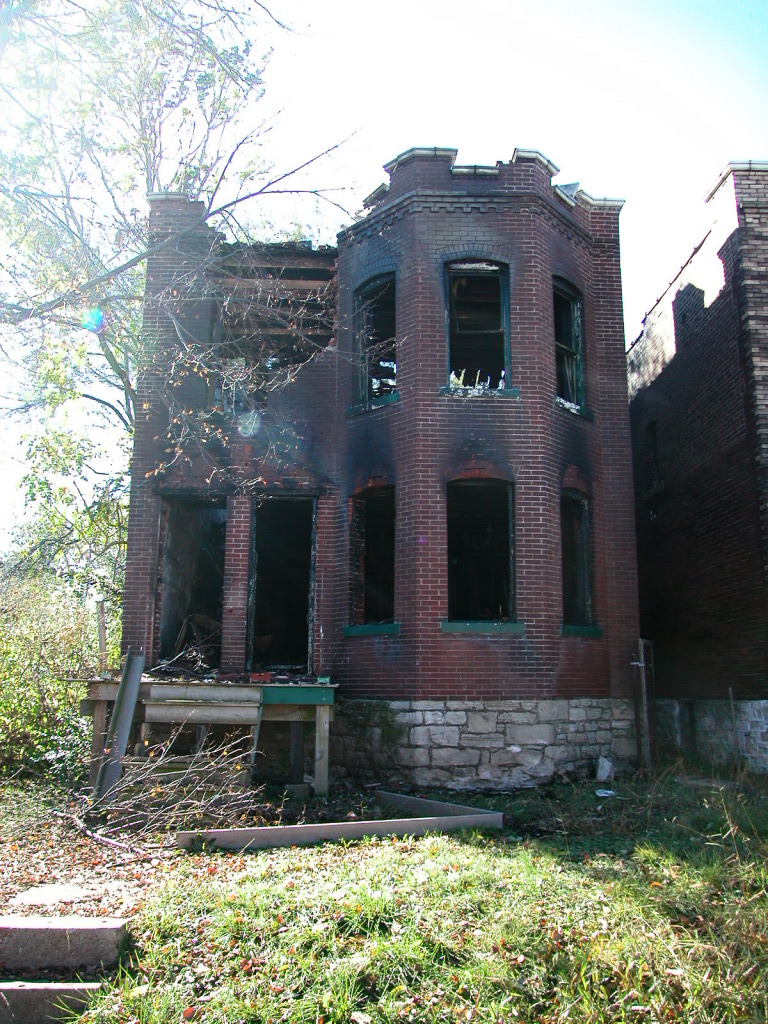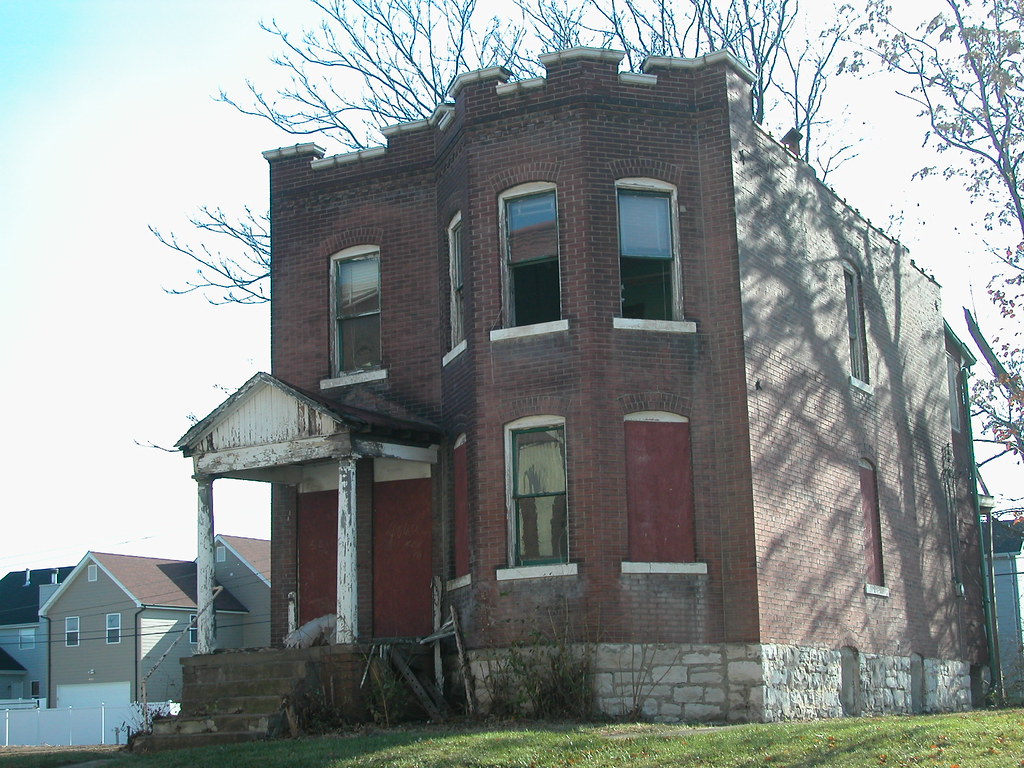As part of the Garden District Commission's Botanical Heights project, the six eastern blocks of the McRee Town neighborhood bounded by 39th, DeTonty, Thurman and Folsom streets was nearly completely demolished. The project required a Memorandum of Agreement with the State Historic Preservation Office due to the extensive demolition. Part of the agreement entailed removing McRee Town's National Register of Historic Places listing, the Tiffany-Dundee Place Historic District, and then re-listing the Tiffany neighborhood east of 39th Street and McRee Town west of Thurman.
In 2007, the Garden District Commission hired Lynn Josse, the city's leading expert on creating urban historic districts, to undertake the difficult task of trying to re-list the severed section of McRee Town. However, the resulting Liggett and Myers Historic District not only included all remaining previously-listed buildings west of Thurman but ended up including several buildings never before listed. The district listing certainly is encouraging to efforts to create historic districts in similarly-compromised sections of the city.
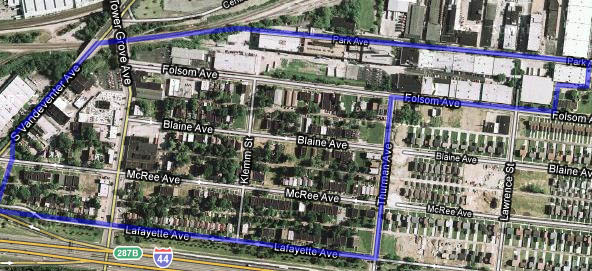 Boundaries of the Liggett and Myers Historic District
Boundaries of the Liggett and Myers Historic DistrictJosse's district nomination establishes the significance of the former Liggett and Myers Tobacco plant (designed by Isaac Taylor and constructed starting in 1896) at the north end of the neighborhood, and ties many residents of the historic dwellings to the south to employment at Liggett and Myers.
 The former Liggett and Myers Tobacco plant, looking northwest from Folsom Avenue.
The former Liggett and Myers Tobacco plant, looking northwest from Folsom Avenue.The district includes a wide range of building types, with most buildings being residential buildings built between 1890 and 1930. There are a few storefront commercial buildings, a former synagogue and a booster station included as well. Some modern infill housing is also included, as well as a number of vacant lots. No form or style dominates. In short, this collection of buildings was not an easy one to list as a single, unitary historic district -- but not an impossible one.
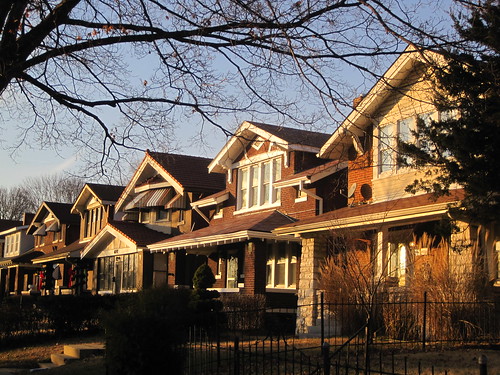 Many gorgeous Craftsman bungalows line Lafayette Avenue; this view shows Lafayette just west of Klemm.
Many gorgeous Craftsman bungalows line Lafayette Avenue; this view shows Lafayette just west of Klemm. This row on Blaine Avenue between Thurman and Klemm combines a Romanesque cornice replete with consoles and a frieze and cast iron lintels over the entrances more typical of earlier styles.
This row on Blaine Avenue between Thurman and Klemm combines a Romanesque cornice replete with consoles and a frieze and cast iron lintels over the entrances more typical of earlier styles. McRee Avenue west of Thurman is lined with many two- and four-flats in the Craftsman style.
McRee Avenue west of Thurman is lined with many two- and four-flats in the Craftsman style. These industrial buildings on the west side of Tower Grove Avenue are included in the district.
These industrial buildings on the west side of Tower Grove Avenue are included in the district. This corner commercial building at the northeast corner of Blaine and Tower Grove avenues is a rehab opportunity.
This corner commercial building at the northeast corner of Blaine and Tower Grove avenues is a rehab opportunity. Some of the oldest buildings in the district are on the north side of McRee Avenue west of Tower Grove.
Some of the oldest buildings in the district are on the north side of McRee Avenue west of Tower Grove.
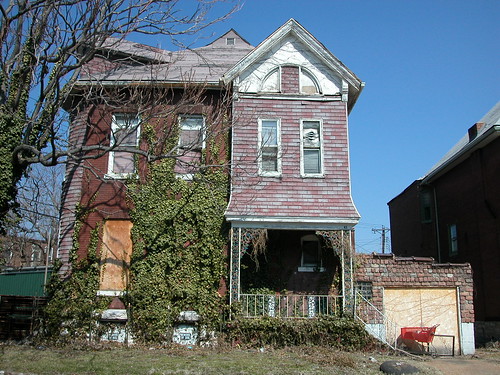 The Queen Ann style house at 4343 McRee Avenue sits on a diagonal alley line (left) and thus has an irregular shape. The Garden District Commission owns the house.
The Queen Ann style house at 4343 McRee Avenue sits on a diagonal alley line (left) and thus has an irregular shape. The Garden District Commission owns the house.
 This L-shaped Italianate house is located at 4235 Blaine Avenue.
This L-shaped Italianate house is located at 4235 Blaine Avenue.The new historic district demonstrates a commitment by the Garden District to a careful strategy of rehabilitation for the remaining section of McRee Town. This approach would have worked east of Thurman, in my opinion, but that chance was lost. Thankfully, the rest of the historic neighborhood has regained its historic district status and, with it, a powerful boost to its future endurance.
 In 2004, the building at 4301 McRee Avenue (at Tower Grove Avenue) was vacant. The terra cotta wrapped double entrance surround at the corner attract many an eye due to its ornate pediments. The pediments feature a mortar and pestle at center that commemorates the building's original drug store tenant. Yet the rest of the building was rough, with all second floor windows missing. The Garden District Commission had acquired the building, and its future was unknown.
In 2004, the building at 4301 McRee Avenue (at Tower Grove Avenue) was vacant. The terra cotta wrapped double entrance surround at the corner attract many an eye due to its ornate pediments. The pediments feature a mortar and pestle at center that commemorates the building's original drug store tenant. Yet the rest of the building was rough, with all second floor windows missing. The Garden District Commission had acquired the building, and its future was unknown. The unknown future arrived through architects Brent Crittenden and Sara Gibson, who purchased the building in 2006. In 2008, the building was rehabilitated as the home for Crittenden and Gibson's enterprises, Urban Improvement Construction and the Central Design Office.
The unknown future arrived through architects Brent Crittenden and Sara Gibson, who purchased the building in 2006. In 2008, the building was rehabilitated as the home for Crittenden and Gibson's enterprises, Urban Improvement Construction and the Central Design Office. Crittenden and Gibson have a vision for a reborn Tower Grove Avenue in McRee Town, and the corner pharmacy is not their only finished project. When neighborhood anchor Tower Grove Hardware closed -- and this writer was among those who did mourn the passing -- the duo purchased the two-story store building at 1624 Tower Grove Avenue across the street from their offices. Rehabilitation was complete by the end of summer 2009. The large storefront openings now are inviting with large windows, after having been covered in boards for decades. Both this building and the corner building at 4301 McRee Avenue are now contributing resources to the Liggett and Myers Historic District.
Crittenden and Gibson have a vision for a reborn Tower Grove Avenue in McRee Town, and the corner pharmacy is not their only finished project. When neighborhood anchor Tower Grove Hardware closed -- and this writer was among those who did mourn the passing -- the duo purchased the two-story store building at 1624 Tower Grove Avenue across the street from their offices. Rehabilitation was complete by the end of summer 2009. The large storefront openings now are inviting with large windows, after having been covered in boards for decades. Both this building and the corner building at 4301 McRee Avenue are now contributing resources to the Liggett and Myers Historic District.











